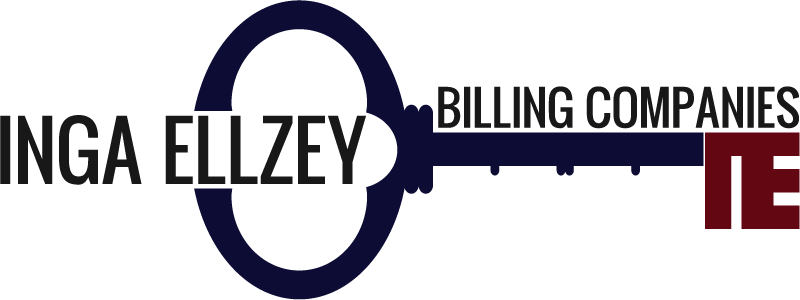Mohs Micrographic Surgery (MMS) is a precise and effective technique for treating specific skin tumors and cancers. It aims to achieve high cure rates while minimizing tissue damage in critical areas. Reimbursement issues can arise when billing for MMS procedures. In this article, we will address coding problems identified during an audit and provide helpful information to prevent reimbursement problems.
The Mohs Codes: 17311, 17312, 17313, 17314, and 17315
The CPT codes for Mohs are distinguished from one another based on:
- Anatomical site
- Number of stages
The Mohs codes include:
- Gross tumor removal
- Mapping
- Color coding
- Histologic preparation including routine stains (e.g., hematoxylin and eosin, toluidine blue)
Note: CPT code 88314 should not be reported with CPT codes 17311-17315 if the above routine stains are performed. CPT code 88314 may be billed for non-routine stains. Modifier -59 must be added to 88314 and the operative report must include the special stains performed and why they were necessary. Billing CPT code 88314 with every Mohs case is not appropriate and may trigger an audit.
Coding Problems Identified
Medicare Recovery Auditors have discovered instances where the preparation and interpretation of slides were performed by individuals other than the surgeon or their employees. According to the AMA’s CPT Coding book for 2023, it specifically states:
Mohs requires the integration of an individual functioning in two separate and distinct capacities: surgeon and pathologist. If either of these responsibilities is delegated to another physician or other qualified health care professional, who reports the services separately; these codes should not be reported.
In the case of an audit by any of the carriers, especially those with whom your practice has a contract, the carriers will demand a refund for any and all monies paid for services that were delegated. Additionally, if the carrier suspects fraud, the practice’s providers can be charged with a crime, resulting in huge paybacks, potential loss of one’s medical license, and/or incarceration.
Mohs followed by Secondary Intention
If no closure is performed after the final stage of Mohs, E/M visits can be charged for each follow up visit as the Mohs codes have no follow-up period (e.g., no postop days).
Mohs Followed By a Repair
If closure is performed the day of or the day after Mohs, the repair codes can be billed. They include:
- Simple closure
- Intermediate closure
- Complex closure
- Flaps
- Grafts
Note: Frequently, more than one type of closure may be required. In such situations, be sure to check the Correct Coding Initiative (CCI) for possible bundling and/or the requirement of attaching certain modifiers.
Incomplete Mohs
If not all the stages of Mohs can be performed on a single date of service, then start again with the CPT code 17311 or 17314 on the subsequent day. No modifiers are needed.
If the repair is also performed on another date of service, no modifier is needed unless required by the CCI.
Biopsy Prior to Mohs (same date of service)
If it is decided that Mohs is the lesion removal of choice, but the patient does not have a biopsy to verify the lesion is malignant, a biopsy and frozen section can be reported for the same date of service. However, it is important to attach modifier -59 to both of the services.
- Biopsy codes (11102, 11104, and 11106)
- Frozen section code 88331
Medical Necessity
The medical record must clearly demonstrate (e.g., document) that this procedure was chosen due to complexity factors. They include:
- Poorly defined clinical borders
- Potential deep invasion or
- Prior irradiation
Additionally, size and location considerations, with an emphasis on maximizing tumor-free tissue preservation, should be documented. Medicare will only consider reimbursement for MMS when the documented diagnoses and indications align with accepted criteria and clearly state that MMS is the most suitable choice for treating a specific lesion.
Histologic Description and Subsequent Stages
For stage one, if a tumor is visualized, it is necessary to describe the histology of the specimens taken. This description should encompass the depth of invasion, pathological pattern, cell morphology, and, if applicable, the presence of perineural invasion or scar tissue.
In subsequent stages, if the tumor’s pattern and morphology remain unchanged, it is sufficient to note that they are consistent with the first stage. It is unnecessary to repeat the detailed description provided for the first stage, assuming it applies to subsequent stages. However, if any differences are identified, those changes should be documented accordingly.
In Summary
Accurate coding and documentation are essential for successful reimbursement of MMS. Providers should adhere to the specific CPT codes, ensure comprehensive documentation, and emphasize the medical necessity of the procedure. By addressing coding problems and following the guidance provided in this article, providers can navigate reimbursement challenges and receive fair and accurate compensation for their valuable MMS services.
Resource: MLN Matters #SE1318 – Guidance to Reduce Mohs Surgery Reimbursement Issues
Read more from our published resources:
UNDERSTANDING THE ROLE OF MODIFIERS IN MEDICAL BILLING
PROPOSED PHYSICIAN FEE SCHEDULE ADJUSTMENTS CY 2024
MAXIMIZING REIMBURSEMENT FOR ALLERGY TESTING
ABOUT INGA ELLZEY AND OUR DERMATOLOGY BILLING SERVICES
After 28 years of perfecting billing processes, Inga Ellzey continues to be the nation’s leading expert in dermatology billing. Our billing service serves over 100 dermatology practices in 37 states without utilizing any offshore labor. Our goal is to provide our clients and their patients with the most competent and professional service available on the market today.
If you are interested in speaking with our company about how we can maximize your collections while also improving your process, please contact us or call 888-434-4374.

